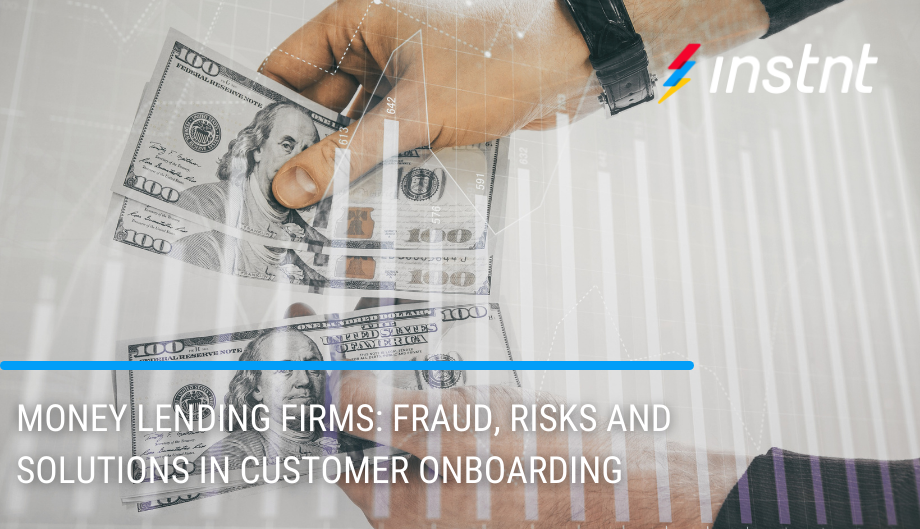
As the effects of the pandemic continue, online transactions, especially those related to financial services, will continue and even increase. The number of mobile banking registrations tripled early on, in April 2020, according to an analysis by Fidelity National Information Services and NextAdvisor, and it is expected to increase.
It is therefore even more critical for companies offering financial services — from the largest regulated institutions to the smallest fintech start-ups — to know that a customer creating or logging into an account is who they say they are rather than a criminal using stolen credentials.
At the same time, real users and customers of financial services need to be vigilant about managing their personal information and account data, and companies need to manage this data more prudently.
Unfortunately, with so many new services — all promising a novel, frictionless banking experience — firms need to better understand the customer journey, including the onboarding experience, as the first step in delivering these new services.
Types of Loan Fraud
Fraud occurs when an individual intentionally uses deceptive or unfair practices for financial gain by gaining access to someone else’s personal information or account credentials. This can be theft of this information with or without the account holder’s knowledge.
Fraud does not have to be executed by an individual; indeed, many large-scale fraud schemes are carried out by large groups intent on targeting and breaching several accounts and companies all at once.
Unfortunately, the victim is not just the individual whose information was stolen. In addition, the financial institution, payment network or even government that the fraudster uses to access accounts and funds is also a victim, as the company holds a responsibility to compensate the individual for losses.
Fraudulent loans can occur in several ways. One is when the criminal steals the credentials of a real, current customer and then applies for a new loan, line of credit or credit card using those credentials. Another type of fraudulent loan occurs when the criminal creates a fake account using a mix of both real and false information and then applies for credit. Eventually, credit will be extended, but the criminal has no intention of ever paying it back.
As a review, here are the general categories of fraud that serve as the biggest concern for banks, lenders and other financial institutions offering credit products.
“Traditional” Identify Theft
Identity theft occurs when someone steals the personal information of another individual in order to assume the identity of the victim, gain access to the victim’s bank or credit card accounts and steal funds.
The 2021 Identity Fraud Study by Javelin Strategy & Research found that of the $56 billion total combined fraud losses in 2020, identity fraud accounted for $43 billion.
Synthetic Identity Theft
In traditional identity theft, a criminal steals the personal information or account credentials of a real person. In synthetic identity theft, by contrast, a criminal combines both real and fake information to create a fictitious identity that is used to open fraudulent accounts. These accounts are then used to make withdrawals and purchases or open up new lines of credit. Bank losses from synthetic identity fraud at $6 billion annually, according to CNBC.
Synthetic identity theft typically occurs when a criminal illegally obtains a Social Security number — often of a child younger than 18 with no credit history, or of someone long deceased — who has not had any credit activity for several years. The criminal then uses a combination of fake names and contact information to apply for credit. It might take a few tries, but after a while the fraudster will be extended credit and will keep applying for increasingly larger amounts. Of course, they might need to make small payments at the beginning, but eventually they will “bust out” and make off with a large sum, leaving the lender holding the bag.
“Friendly” Fraud
Another category of fraud that banks must deal with is “friendly fraud,” which occurs in several ways. One type of friendly fraud occurs when a consumer requests a refund or a chargeback from their credit card company even though they have properly received the good or services. Another type of friendly fraud can take place when a real, nonfraudulent banking or lending customer doesn’t pay back a loan — whether intentionally or due to financial hardship.

Challenges With Money-Lending Apps
Apps that offer loans or financing for consumers must contend with several challenges. Some of these are incumbent and endemic to the financial services industry; others are new. Let’s have a look.
Cybercrime
Criminals particularly target money-lending apps because they are convinced that such apps, usually launched by start-up companies, lack anti-fraud measures or depositors insurance to protect their customers’ assets. Indeed, in efforts to launch a service and attract as many customers as possible, many start-up companies skimp on compliance or overlook incorporating the strongest identity-verification and fraud-detection software. Criminals seek out fintech and money-lending apps in hopes of opening accounts or credit lines in order to extract funds without any intention of repaying.
Lack of Regulation
The fact that many new fintech and money-lending apps do not fall under the same regulation as more entrenched services has served to propel the success of several start-up apps. For example, Buy Now, Pay Later and peer-to-peer payment services are new categories of fintech that did not exist 20+ years ago, and regulation has often been slow to catch up. Regulation may seem to slow down the growth of the industry, but on the flip side, more regulation might actually serve to attract users and grow the overall market. This is particularly true for cryptocurrency lending platforms.
Younger, Less Experienced Users
Younger users of money-lending apps aren’t necessarily an issue, but their credit behaviors can be problematic — cutting into an app’s profitability. For example, 34% of consumers who used Buy Now, Pay Later services fell behind on one or more payments. Of those consumers, younger shoppers were far more likely to fall behind, with more than half of Gen Zers and millennials reporting that they had missed a payment versus 22% of Gen Xers and just 10% of baby boomers.
How To Improve the Customer Onboarding Process for Money-Lending Firms
Financial institutions need to sign up more good customers in a frictionless and exciting way. According to the consulting firm Deloitte, 38% of customers say user experience is the most important factor when choosing a bank.
While digital onboarding intends to make signing up for new lending accounts simpler and more convenient, the majority of processes can still impose friction that leads to abandonment in the customer journey. However, with fraud growing exponentially, banks and financial institutions also need to be compliant with government and industry standards, ensuring that the new customers they are onboarding are not fraudsters.
-
Identity Verification
Customer Due Diligence (CDD) with Know Your Customer (KYC) procedures are essentially background checks. Banks, lenders and financial services companies need to not only verify that the customer wishing to open an account is indeed who they say they are, but also that the customer is not engaging in criminal activities. -
Machine Learning
Machine learning and related automation technologies inject efficiency into customer onboarding. In addition to accelerating the experience for users during the account opening process, machine learning can process large volumes of information and detect anomalies with speed and efficiency, augmenting the efforts of human employees. -
Lean on an Outsourced Provider To Increase Predictive Accuracy
An outsourced, managed digital onboarding service with accurate machine learning predictive analytics can verify identities and select customers in real time, recapturing up to 50% of your legacy-system rejects. This lowers fraud losses, as you are approving more good customers, and saves time and expenses, since you won’t need to keep buying new solutions, building your own solutions in-house or training your staff on how to use them. -
Shift Fraud Losses With Insurance Indemnification
Financial institutions need to reserve capital to be able to write off losses when they occur. Instnt, the first fully managed customer-onboarding service for business, is the only provider that offers contractual guarantees of fraud-loss indemnification of up to $100 million. -
Achieve Regulatory Compliance and Reach Privacy Goals
Separate databases needed for regulatory compliance may not be updated regularly enough, decreasing accuracy. Managed digital onboarding services provide complete regulatory compliance — including addressing KYC and Anti-money laundering compliance (AML) and privacy issues — which is essential to effective corporate governance and risk management in the banking and financial services industry.
Using a managed digital customer-onboarding system can significantly improve customer acceptance while handling identity verification and regulatory compliance, lowering fraud losses, and achieving higher revenue and profitability.
Instnt’s Onboarding Solution
Instnt is the only customer-acceptance service that provides performance guarantees for each good customer a bank accepts. Because Instnt assumes liability for fraud, banks can experience growth like never before without any of the negative effects of widening their sales funnels. For more information on Instnt’s innovative solution to an age-old problem, start your free demo today.


